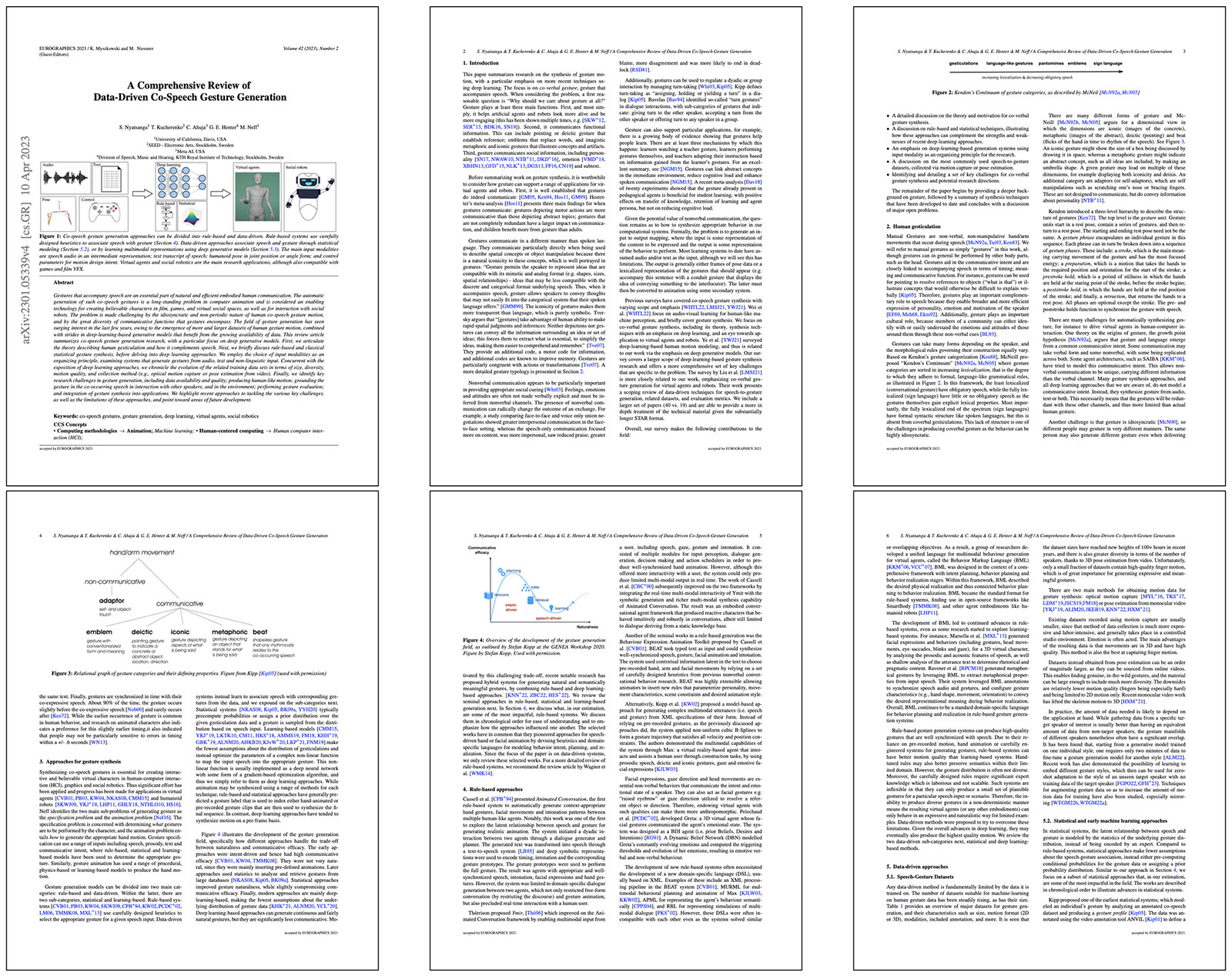Eurographics 2023: A Comprehensive Review of Data-Driven Co-Speech Gesture Generation

This research paper was accepted for publication by the 44th Annual Conference of the European Association for Computer Graphics.
Authors: Simbarashe Nyatsanga, Taras Kucherenko, Chaitanya Ahuja, Gustav Eje Henter, Michael Neff.
A Comprehensive Review of Data-Driven Co-Speech Gesture Generation
Download the full research paper. (1 MB PDF)
Gestures that accompany speech are an essential part of natural and efficient embodied human communication.
The automatic generation of such co-speech gestures is a long-standing problem in computer animation and is considered an enabling technology in film, games, virtual social spaces, and for interaction with social robots. The problem is made challenging by the idiosyncratic and non-periodic nature of human co-speech gesture motion, and by the great diversity of communicative functions that gestures encompass.
Gesture generation has seen surging interest recently, owing to the emergence of more and larger datasets of human gesture motion, combined with strides in deep-learning-based generative models, that benefit from the growing availability of data. This review article summarizes co-speech gesture generation research, with a particular focus on deep generative models.
First, we articulate the theory describing human gesticulation and how it complements speech. Next, we briefly discuss rule-based and classical statistical gesture synthesis, before delving into deep learning approaches. We employ the choice of input modalities as an organizing principle, examining systems that generate gestures from audio, text, and non-linguistic input. We also chronicle the evolution of the related training data sets in terms of size, diversity, motion quality, and collection method.
Finally, we identify key research challenges in gesture generation, including data availability and quality; producing human-like motion; grounding the gesture in the co-occurring speech in interaction with other speakers and in the environment; performing gesture evaluation; and integration of gesture synthesis into applications. We highlight recent approaches to tackling the various key challenges, as well as the limitations of these approaches, and point toward areas of future development.


